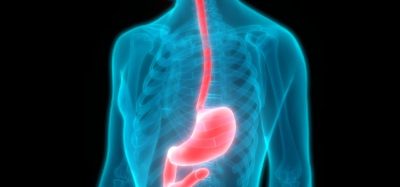Novel spectroscopy technique could improve safety and quality of heparin
Posted: 17 May 2021 | Hannah Balfour (European Pharmaceutical Review) | No comments yet
Using time of flight secondary ion mass spectrometry (ToF-SIMS) enabled the detection of nanoscale quantities of glycosaminoglycan (GAG) contaminants in heparin.
![Vials of heparin filling the screen [Credit: JLMcAnally / Shutterstock.com].](https://www.europeanpharmaceuticalreview.com/wp-content/uploads/Heparin2-750x500.jpg)
![Vials of heparin filling the screen [Credit: JLMcAnally / Shutterstock.com].](https://www.europeanpharmaceuticalreview.com/wp-content/uploads/Heparin2-750x500.jpg)
[Credit: JLMcAnally/Shutterstock.com].
Using a state-of-the-art chemical imaging technique called time of flight secondary ion mass spectrometry (ToF-SIMS), researchers have developed an analytical method that is <100x more sensitive at detecting contaminants in heparin, whilst also being faster and requiring less material to analyse. According to its developers at the Schools of Pharmacy and Medicine at the University of Nottingham, UK, the technique could be employed by pharma to improve the quality and safety of heparin.
Heparin is a naturally occurring glycosaminoglycan (GAG) and is also widely used as an anticoagulant drug before and after surgery, as well as during kidney dialysis and blood processing. Pharmaceutical-grade heparin is derived from mucosal tissues of pig intestines or cow lungs. The majority of heparin is made in China and in 2008 there were several deaths and illnesses caused by a contaminated batch. According to the authors of the new study, problems with the supply chain continue to be a concern.
Using ToF-SIMS researchers were able to identify over 400 different GAG contaminants in heparin at the nanoscale (<200ng) within just three to four hours. But how does the spectroscopy technique work? ToF-SIMS blasts high-energy beams of positive ions at the sample’s surface to produces secondary ions. These ions are then accelerated into a time-of-flight analyser and where their mass can be measured. The spectrum of ions provides a detailed measurement of the sample’s chemical make-up.
Leader of the research, Dr Andrew Hook from the School of Pharmacy, explained: “Heparin is particularly susceptible to contamination, commonly from other glycosaminoglycans and as they are all very similar chemically it is difficult to tell them apart using traditional analysis techniques. Whilst there are safety measures in place already to prevent contamination, we saw room for improvement and using the ToF-SIMS techniques we were able to create a faster and more sensitive method for analysing Heparin that can be achieved with a very small amount of sample material.”
Professor of Stem Cell Glycobiology, Cathy Merry added: “There are many real risks to the heparin supply chain, not least of which are the increasing prevalence of animal viruses. The previous heparin crisis was linked to a reduction in the supply of porcine heparin following an outbreak of swine flu. There is a real risk this will happen again and there is now even tighter control on the international trade in animals so it is even more likely that vast numbers of animals could be destroyed if there is another outbreak. There has also been a huge drive to create synthetic heparin and, although this is still a way off, when it is available there will still be a need for a rapid, sensitive comparative technique to characterise the drug heparin which this technique can provide.”
The researchers commented that their new ToF-SIMS technique is scalable for commercial use with the ability to analyse large numbers of samples at a time and Dr Hook concluded: “It is critical that safety measures are as accurate and sensitive as possible. This technique will be a cost-effective way for manufacturers to take their safety and quality control to the next level. We are also looking at how this technique could be adapted to diagnose GAG based disorders that are typically difficult to diagnose like Hunter’s Syndrome.”
The study was published in Communications Chemistry.
Related topics
Analytical techniques, Drug Manufacturing, Drug Safety, QA/QC, Research & Development (R&D), Spectroscopy, Therapeutics









